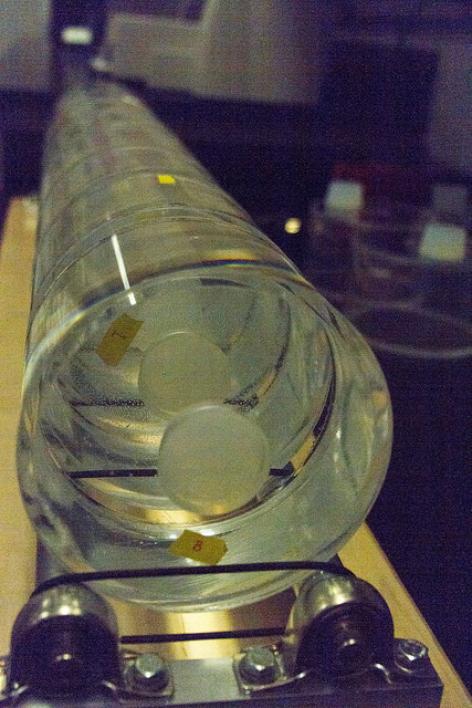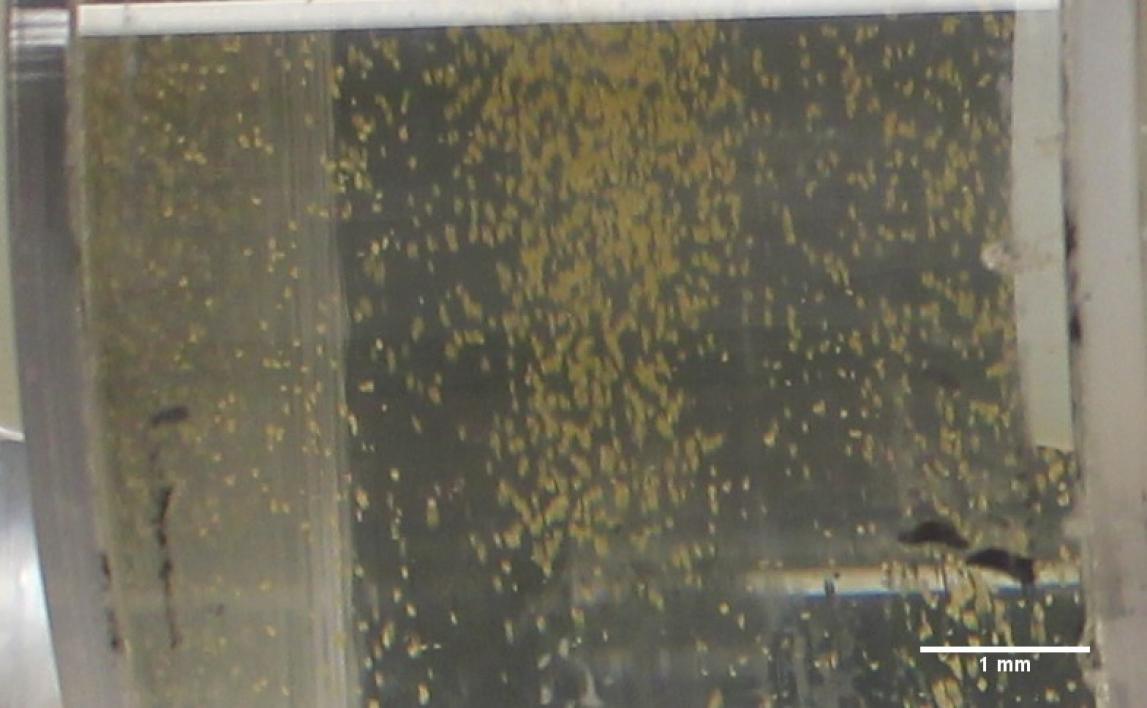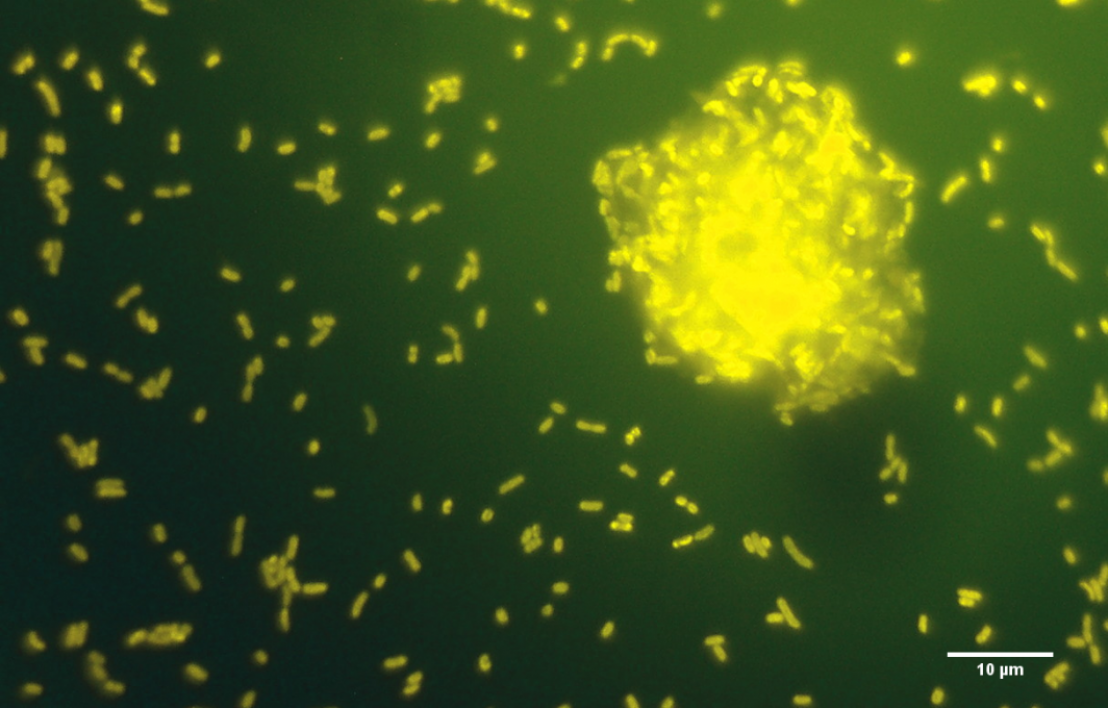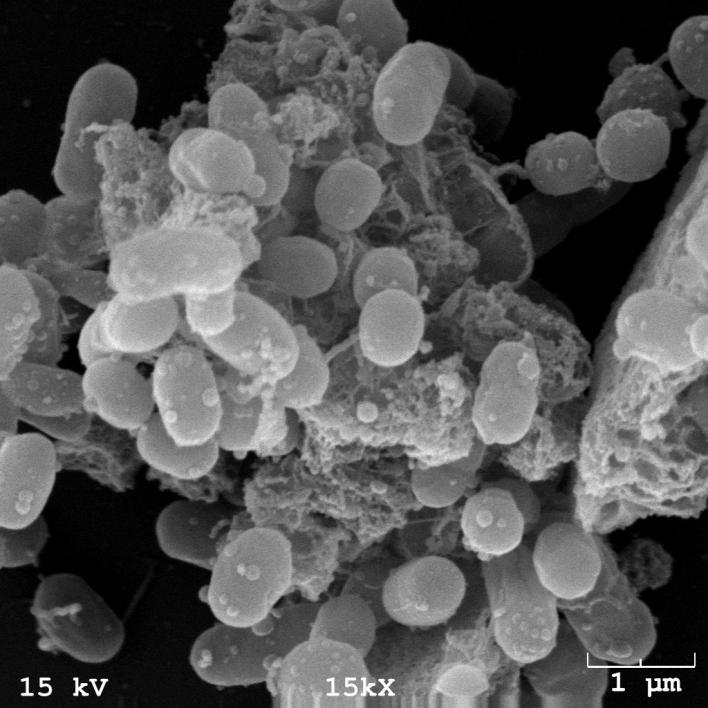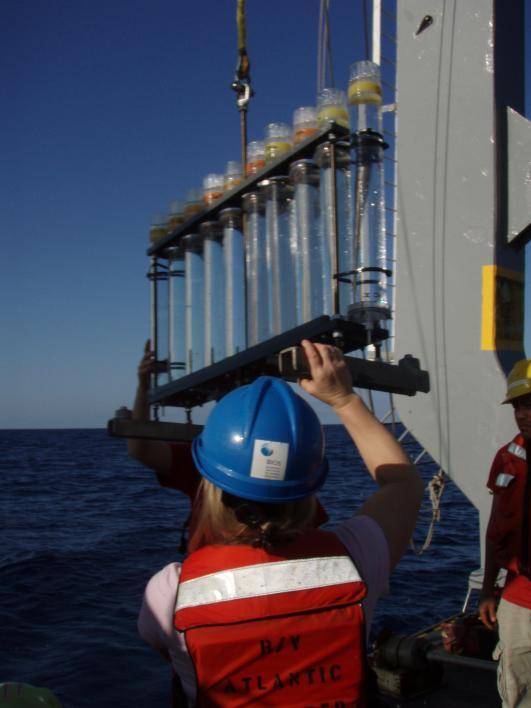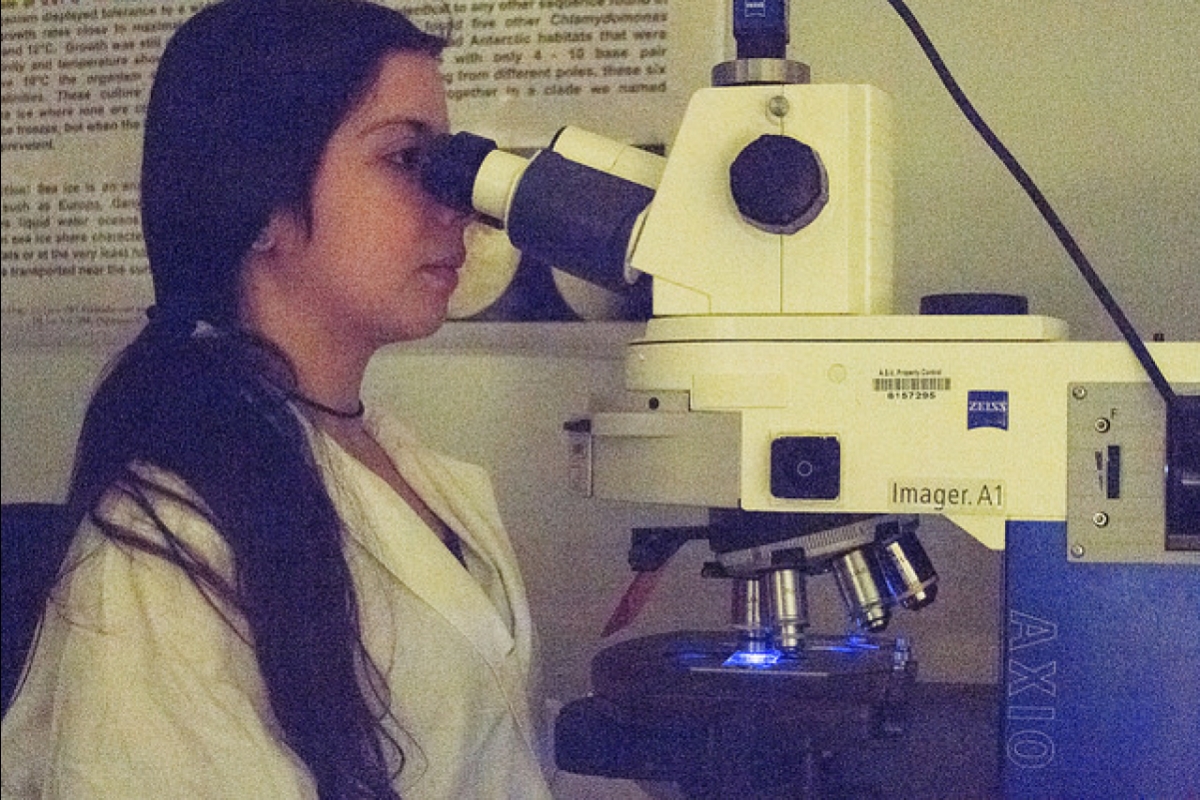Desert oceanographer explores tiniest of ocean plants as nature’s carbon 'pumps'
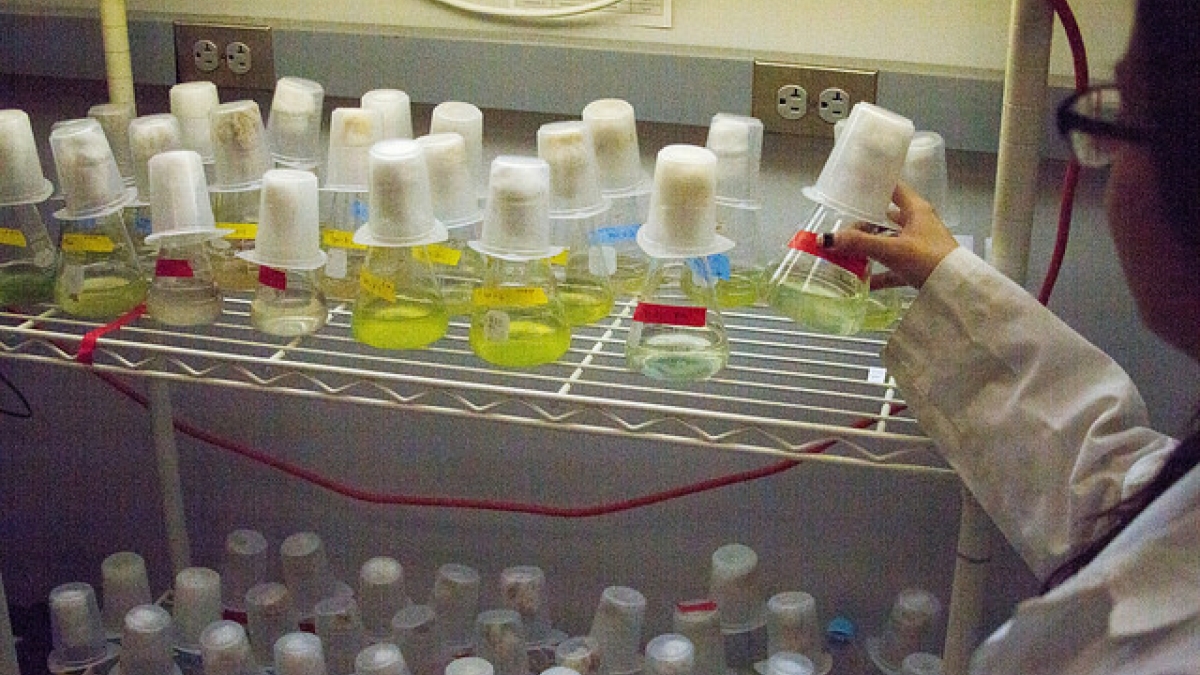
Graduate student researcher Bianca Cruz holds a flask containing cultured phytoplankton.
While millions of travelers will frolic on the beach during their summer vacations, most are blissfully unaware of the billions of microscopic plants making ocean life — and our lives — possible.
These microscopic creatures, known as phytoplankton, not only help support the ocean’s food chain, but also act as a vital carbon sink to buffer the ocean during eras of climate change.
This has long fascinated Arizona State University oceanographer Susanne Neuer, who wants to further explore how these plant-like microbes can help to reduce the effects of greenhouse gases like carbon dioxide, which can mix into the ocean and increase its acidity.
Small but mighty
For a new National Science Foundation-supported study, Neuer wanted to focus on some of the smallest known type of phytoplankton called Synechococcus. These single-celled, photosynthetic bacteria measure only a single micrometer wide (a millionth of a meter, or 50 times smaller than the width of a human hair).
“They are very abundant in the open ocean where there are few nutrients,” explained Neuer, who is a professor in ASU's School of Life Sciences.
Like plants, these phytoplankton use sunlight and carbon dioxide to grow. This process is called photosynthesis, and Neuer’s latest research examines how the planet’s tiniest phytoplankton play a role in permanently transporting carbon to ocean depths, a process called the “biological carbon pump."
Although marine biologists have studied these plankton organisms for decades, they still don’t know a lot about how the tiniest ones contribute to the biological carbon pump. Neuer’s recent proposal, titled “Aggregation of Marine Picoplankton,” earned a $687,521 grant award from the National Science Foundation (NSF). The grant will allow Neuer and her team an opportunity to conduct important field studies in the Sargasso Sea near Bermuda and expand their experiments at ASU.
The award is also notable because it is the first one received by the new Biodesign Center for Fundamental and Applied Microbiomics (CFAM), where Neuer is a resident researcher. The center is part of ASU’s Biodesign Institute and studies the structural mechanisms supporting communities of microscopic organisms, known as microbiomes.
According to Neuer, ancestors of today’s tiniest phytoplankton evolved around 3 billion years ago and are responsible for turning the Earth’s early atmosphere into the oxygen we breathe today.
Specifically, she’s exploring how changing water temperatures and nutrient levels are altering the way phytoplankton consume and transport carbon to the deep ocean. Those trends are becoming more concerning as climate change causes expanding “nutrient deserts” in the open ocean, according to Neuer.
Carbon sinks
The phytoplankton absorb carbon through photosynthesis, then release it as a dissolved carbon waste that can make the phytoplankton clump, or aggregate, often with other phytoplankton and bacteria, to create a shower of organic debris known as marine snow.
Neuer’s partner on her NSF grant proposal is Hinsby Cadillo-Quiroz, a fellow CFAM researcher and microbial biologist. Cadillo-Quiroz helps Neuer’s team isolate the bacteria that reside in the aggregates and investigates how they affect the phytoplankton’s aggregation.
According to Neuer’s NSF proposal, her research team discovered that low nutrient levels cause the phytoplankton to produce higher levels of clear, slimy waste known as Transparent Exopolymeric Particles (TEP). That is because they would continue to absorb carbon but if there aren’t other necessary nutrients, like nitrogen and phosphorous, then the phytoplankton just dispose of the carbon as processed waste.
More slime leads to more aggregation of plankton particles and other marine snow, which in turn increases their sinking velocity and the efficiency of the biological carbon pump.
Neuer explains, “The carbon that was fixed into the phytoplankton is now in a particle that’s heavy enough to sink out gravitationally, whereas the phytoplankton themselves are too tiny to sink. You know, they stay suspended. It’s like feathers in the air.”
World of opportunity
Neuer’s NSF grant funding will allow her team of ASU student researchers to grow more phytoplankton in their Tempe campus lab. Some of their experiments use rotating plexiglass tanks to simulate infinite sinking, while others grow different species of phytoplankton in small beakers to determine their growth and TEP formation.
They will pair their lab experiments with field studies at ocean sites around the world, including the historic Bermuda Atlantic Time-series Site (BATS), one of the longest-running oceanographic research projects in the Sargasso Sea near Bermuda. Since 1954, BATS has provided a treasure trove of oceanographic data and has documented changes in the ocean in response to climate change and increasing atmospheric carbon dioxide.
In addition to expanding knowledge about the marine planktonic microbiome, Neuer’s NSF grant also advocates for student leadership and cultural diversity amongst her research staff. The proposal highlights planned participation from students in ASU’s Microbial EducatioN Training and OutReach (MENTOR) program and School of Life Sciences Undergraduate Research (SOLUR) program, which encourages minorities in science.
One student, Bianca Cruz, is originally from Puerto Rico and now an experienced research assistant in Neuer’s lab.
“I was very interested already in marine sciences but also beyond that,” said Cruz. “How do the organisms in the ocean interact with everything else on the planet?”
Cruz is nearly finished with her master’s degree in biology, making her the first person in her family to become a scientist and the first to finish graduate school. In the fall, Cruz will continue her studies at ASU’s environmental sciences doctoral program.
While it may seem strange to conduct ocean research from the dry desert of Maricopa County, Neuer notes that parallels between the delicate balance of life in the desert and increasing “ocean deserts” from a climate change perspective.
She and her students are determined to document the importance of phytoplankton in the carbon cycle of the oceans and in warming waters, and in the process, explore Bermuda’s seas — and probably enjoy at least one beach excursion of their own along the way.
More Science and technology

Cracking the code of online computer science clubs
Experts believe that involvement in college clubs and organizations increases student retention and helps learners build valuable…
Consortium for Science, Policy & Outcomes celebrates 25 years
For Arizona State University's Consortium for Science, Policy & Outcomes (CSPO), recognizing the past is just as important as…

Hacking satellites to fix our oceans and shoot for the stars
By Preesha KumarFrom memory foam mattresses to the camera and GPS navigation on our phones, technology that was developed for…

